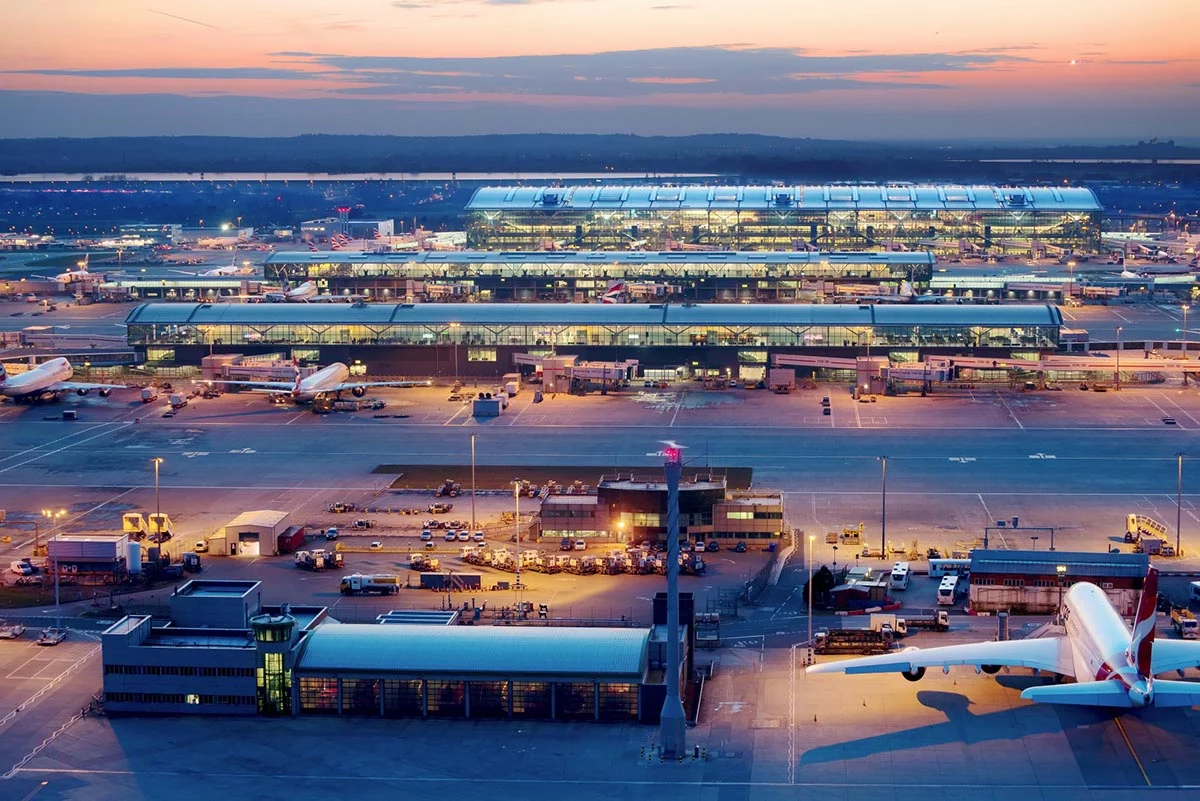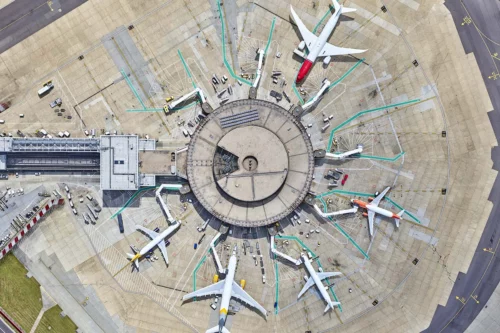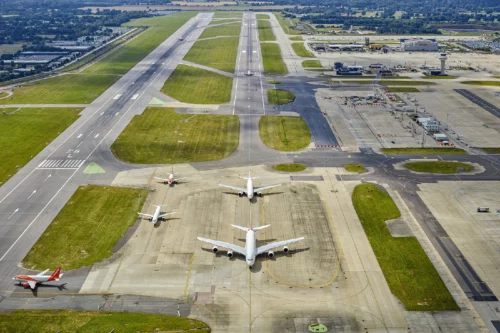Which airports are the winners and losers of the post-pandemic travel boom?
Links on Head for Points may support the site by paying a commission. See here for all partner links.
As we headed into 2025, a flurry of emails from airport press offices hit my inbox with news of record passenger numbers.
Heathrow, Stansted, Manchester and others all crowed of reaching new highs and smashing pre-pandemic records. “London Stansted soars to new heights with record-breaking 2024” said one; “Heathrow ends record-breaking year with busiest December ever” said another.
Covid’s dampening effect on travel had, it seemed, well and truly come to an end. Or had it?
Sometimes silence speaks louder than words. Whilst a handful of airports were celebrating, I knew others were languishing, stuck in a rut and unable to find a way out. The collapse in London City Airport’s numbers is widely known, but what about other airports?
I had to wait for the Civil Aviation Authority to publish full-year numbers for UK passenger airports before I could take a closer look, but the numbers are finally in. For this analysis, I have looked at passenger figures for the past ten years, from 2015 to 2024.
The winners
Let’s start with the winners. As I noted above, numerous UK airports smashed records for overall passenger numbers. Looking at data over the past seven years (from 2018 onwards), 12 airports reported their best performance in 2024:
- Heathrow (83.9 million; previous high 80.9 million)
- Manchester (30.8 million; previous high 29.4 million)
- Stansted (29.7 million; previous high 28.1 million)
- Edinburgh (15.8 million; previous high 14.7 million)
- Bristol (10.7 million; previous high 9.9 million)
- Belfast International (6.8 million; previous high 6.3 million)
- Liverpool (5.1 million; previous high 5 million)
- Leeds Bradford (4.2 million; previous high 4 million)
- Bournemouth (1.1 million; previous high 950,000)
- Sumburgh (290,000; previous high 270,000)
- Teesside (230,000; previous high 226,000)
- Biggin Hill (8,300; previous high 6,495)
Some of these are unsurprising. Heathrow easily beat its own low-balled forecasts and swept to a decisive 83.9 million passengers, approximately three million more than its previous record of 80.9 million in 2019.
Manchester and Stansted, both owned by Manchester Airports Group (MAG) also set new records. Although their overall figures are lower than Heathrow, they actually managed to grow at a faster rate; 4.7% compared to 2019 for Manchester and 5.5% for Stansted.
Bristol appears to be doing very well, with steady growth over the past decade from 6.8 million in 2015 to 10.6 million in 2024, an increase of 56%. Belfast International recorded similar growth of 53%, to 6.8 million passengers, as has Bournemouth, from 705,000 a decade ago to 1.1 million in 2024 (a 54% increase).
Teesside International Airport (formerly Durham Tees Valley Airport) recorded the biggest ten-year growth of any airport on this list with a 62% rise in passenger numbers, albeit to a grand total of just 230,000!
Biggin Hill, which does not offer any regularly scheduled commercial flights, has gone from 644 passengers in 2015 to 8,300 in 2024. I assume this is down to increased use by private jets.
The losers
Not all airports have benefitted from the growth in passenger numbers. Whilst some are doing just fine, others are doing less well.
The biggest surprise on this list is Gatwick. It remains 7.8% down, with just 43.2 million passengers in 2024 versus 2019’s 46.6 million.
Overall available seats at Gatwick have reduced from 53.2 million in 2019 to 51.2 million in 2024, a reduction of 3.7%. This is less than the 7.8% reduction in bums on seats, so in addition to fewer seats being open for sale it appears that load factors have also gone down.
What is driving this? Virgin Atlantic accounts for just under 1 million of those missing passengers; it pulled out of the airport in 2020 and retrenched at Heathrow. Cirium data indicating that it offered 985,000 seats for sale during 2019.
British Airways has also not fully recovered its capacity at Gatwick. It offered just under two million fewer seats for sale in 2024 than it did in 2019: 7.3 million versus 9.3 million.
Other airlines have also come and gone. Norwegian, which pre-covid offered 5.7 million seats thanks to its extensive transatlantic network, has reduced by four fifths and now only fields 1.1 million seats, all of them short haul.
Meanwhile easyJet, Vueling and Tui have grown their schedules at Gatwick, helping to offset some of the losses.
Other UK airports that remain down versus 2019 include Luton (-7%), Glasgow (-8.8%) and Newcastle (-1.1%).
MAG was unable to replicate its success at Stansted and Manchester with East Midlands. It remained down 11.6% versus 2019 and continues a trend that began before covid; passenger numbers peaked at the airport in 2017, at 4.9 million.
I’ve written about London City Airport’s struggles before, but these figures put it in stark focus. It remained down 30.2% over its 2019 figures, with just 3.6 million passengers.
Downward trends at a lot of smaller, regional airports in the UK have continued. Many of these have been charting steady declines over the past decade, even before covid.
Aberdeen and Belfast City both peaked in 2015 and have since slid down; a whopping 33.7% drop in Aberdeen’s case to 2.3 million passengers. I suspect reduced oil and gas demand is at play there.
Cardiff and Southampton have dropped below the million-passenger mark; Cardiff from 1.2 million in 2015 to 870,000 in 2024 whilst Southampton fell from 1.8 million to 850,000. Only time will tell whether the 164-metre runway extension will help there.
Conclusion
In broad terms, what appears to be happening is that airlines are consolidating capacity at some of the largest airports. 60% of the top 10 busiest airports posted record numbers in 2024, whilst smaller regional airports appear to be in decline.
What’s driving those changes? I can think of two possibilities.
The first is the ‘network effect’ of airports that can offer lots of connections, thus maximising the number of passengers they serve. The more connections you can offer the more passengers you can theoretically attract.
The second is that many airlines reduced the size of their fleets during covid and remain under-sized compared to 2019. Faced with a shortage of aircraft, they are prioritising flights to the busiest (ie. biggest) airports and where slots are scarce. Niche airports which may not be as profitable or competitive have been sidelined.
Whatever the reasons, it’s clear that not all airports are making a success of the post-covid environment despite an overall increase in passenger numbers in the UK.
With the post-covid recovery now largely complete, I suspect it will take a few more years to see how things settle. For now, Heathrow, Manchester and Stansted continue to beat pre-pandemic numbers, with all three setting new February records last month.





 Rhys
Rhys 





Comments (97)